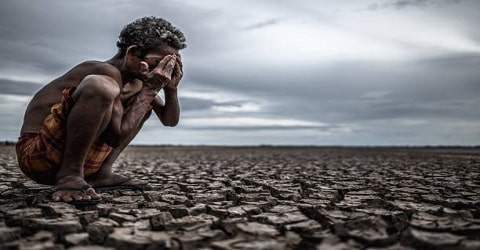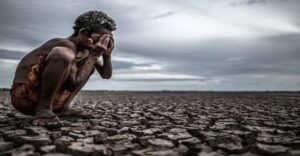
Crucial Role of Economic Growth in Averting Climate Catastrophe
The role of economic growth in averting climate catastrophe cannot be overstated, yet it demands a nuanced understanding beyond mere efficiency. While improving energy efficiency is pivotal, it must not be conflated with sufficiency. The notion of sufficiency, entailing a reduction in consumption, aligns with the degrowth movement, which gained momentum post-COVID-19 lockdowns and geopolitical upheavals.
However, advocating for absolute consumption reduction overlooks the potential of green growth strategies. Rather, economic growth can be a catalyst for decarbonization, driving innovation and facilitating the transition to clean energy. A balanced approach integrating efficiency gains and sustainable growth is imperative for steering us away from environmental peril.
Crucial Role of Economic Growth in Averting Climate Catastrophe
In the ongoing discourse surrounding climate change mitigation, there exists a contentious debate between proponents of economic growth and advocates for sufficiency and degrowth. The contention primarily revolves around the efficacy of economic growth in reducing carbon emissions and whether it should be prioritized over sufficiency-based approaches.
While improving energy efficiency undoubtedly remains a crucial aspect of combating climate change, it is essential to recognize the nuanced relationship between economic growth and environmental sustainability.
Here, we delve into the intricate dynamics at play and elucidate the indispensable role of economic growth in averting climate catastrophe.
Table of Contents
1. Efficiency versus Sufficiency
The interplay between efficiency and sufficiency is significant in navigating climate change strategies. Efficiency prioritizes optimal resource use, while sufficiency advocates for consumption limitations, a core tenet of the degrowth movement. Distinguishing between them is crucial; sufficiency urges reduced energy consumption, aligning with broader environmental goals. Yet, addressing climate change requires both efficiency enhancements and sufficiency measures to do more with less.
The role of economic growth in averting climate catastrophe is also significant, as sustainable growth models can promote efficiency improvements and sufficiency measures simultaneously. The International Energy Agency underscores that bolstering energy efficiency could contribute substantially to emission reductions, potentially meeting 40% of global climate targets.
Similarly, the European Environment Agency notes significant drops in energy consumption per GDP unit across Europe, attributing it to energy efficiency initiatives. Balancing these principles is key to crafting effective climate policies for a sustainable future.
Read More: Climate-friendly Investments in Developing Countries
2. Post-COVID-19 Reflections
The COVID-19 pandemic triggered a global reflection on societal norms and consumption habits. Lockdowns led to a notable drop in carbon dioxide emissions, renewing interest in sufficiency-oriented solutions. Yet, while pandemic-induced economic slowdowns temporarily reduced emissions, they highlighted the challenge of decoupling economic growth from environmental impact.
The International Energy Agency (IEA) reported a 5.8% decrease in global CO2 emissions in 2020 compared to 2019, mainly due to reduced economic activity during lockdowns. Research in Nature Climate Change estimated a reduction of about 2.6 billion metric tons of CO2 emissions during the early 2020 lockdowns.
This underscores the intertwined nature of economic activity and environmental sustainability amidst global crises. The role of economic growth in averting climate catastrophe becomes increasingly apparent in such scenarios, where the balancing act between economic prosperity and environmental preservation is crucial for long-term sustainability.
Read More: Impact of Climate Change: 3 Most Affected Sectors
3. Challenges of Degrowth
Advocates of degrowth advocate for reducing consumption to prioritize well-being over perpetual economic expansion. However, its feasibility is questionable, especially concerning global poverty alleviation. The role of economic growth in averting climate catastrophe is a critical consideration here.
Implementing degrowth policies involves navigating complex socio-economic dynamics and balancing environmental needs with developmental goals, notably in low-income nations. The World Bank approximates that over 700 million people lived in extreme poverty in 2015.
The International Labour Organization notes that global unemployment surged during the COVID-19 pandemic, worsening socio-economic vulnerabilities. Achieving degrowth while addressing poverty requires delicate maneuvering to ensure sustainable progress without exacerbating existing hardships, highlighting the intricate challenges of transitioning towards a more equitable and environmentally conscious society.
Read More: Political Stability: A Way Of Sustainable Development
4. Economic Realities
A thought experiment highlights the limits of relying solely on reducing economic output to meet emission reduction goals. It demonstrates that significant GDP drops would be necessary to match emissions cuts from efficiency improvements. This proposal, especially for wealthy nations, raises significant socio-economic concerns and tests societal resilience.
However, considering the role of economic growth in averting climate catastrophe, it’s crucial to note that sustainable economic development can also contribute to emission reductions through innovation and investment in green technologies. In 2020, global GDP shrank by 2.7%, the largest decline since the Great Depression.
A study in Nature Communications proposes that to cap global warming at 1.5°C, global GDP growth rates might need yearly reductions of about 1%. This underscores the complex balance required between economic prosperity and environmental sustainability in mitigating climate change.
Read More: Collective Climate Actions: The Urgency of Global Collaboration
5. Necessity of Green Growth
Despite the calls for degrowth, driving economic expansion remains pivotal for steering towards a low-carbon future. The role of economic growth in averting climate catastrophe is evident in vital investments in clean energy infrastructure, underscoring the interdependence of economic progress and climate action. Embracing green growth fosters innovation and efficiency, charting sustainable development paths.
The United Nations Environment Programme (UNEP) anticipates that transitioning to a green economy could spawn 24 million new jobs globally by 2030. Furthermore, the International Renewable Energy Agency (IRENA) suggests that allocating $1.2 trillion to renewable energy infrastructure by 2030 could yield cumulative savings of $4.2 trillion by 2050.
This highlights the potency of growth-oriented strategies in harmonizing economic prosperity with environmental stewardship.
6. Accelerating Decarbonization
Accelerating decarbonization is pivotal in combating climate change and averting potential catastrophe. Sustainable growth pathways not only counter environmental degradation but also foster transformative solutions.
Efficient practices and innovation boost economic productivity while curbing emissions, ensuring developmental progress. The role of economic growth in averting climate catastrophe becomes evident as the International Energy Agency urges annual investments of $4 trillion in clean energy to meet 2050 climate goals.
McKinsey & Company forecasts that prioritizing energy efficiency in buildings, industry, and transportation could yield annual savings of $2.6 trillion by 2030. Embracing these strategies is essential for a sustainable future, where economic prosperity aligns with environmental stewardship, paving the way for a resilient and thriving global community.
Bottom Line
The role of economic growth in averting climate catastrophe cannot be overstated. While sufficiency-oriented approaches offer valuable insights into reimagining societal norms and consumption patterns, they must be complemented by strategies that harness the potential of economic growth to drive sustainable development.
Achieving environmental sustainability requires a holistic approach that balances efficiency improvements with sufficiency measures, all underpinned by a commitment to fostering inclusive and equitable growth.
As we navigate the complexities of climate change mitigation, embracing a nuanced understanding of the interplay between economic growth and environmental stewardship is paramount to charting a resilient and sustainable future.






